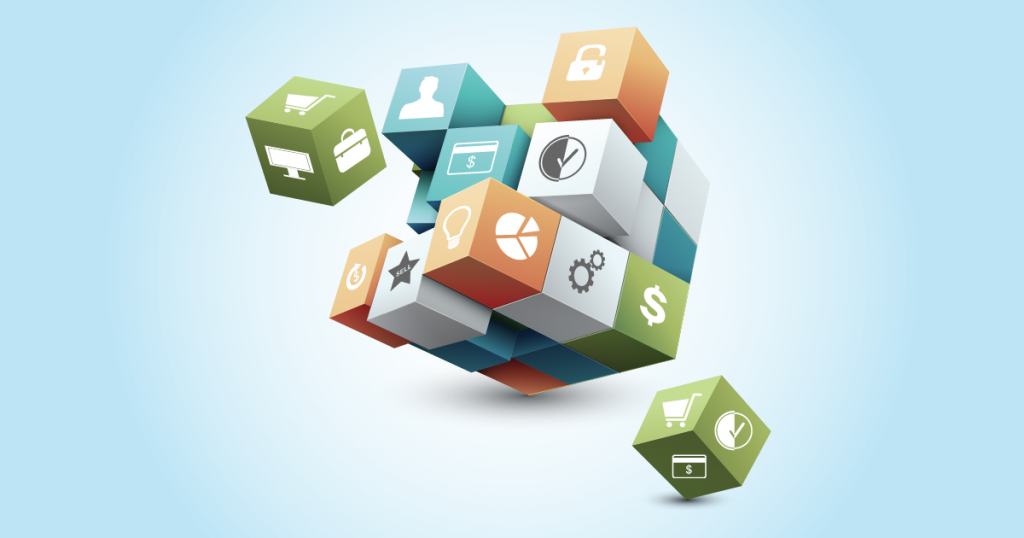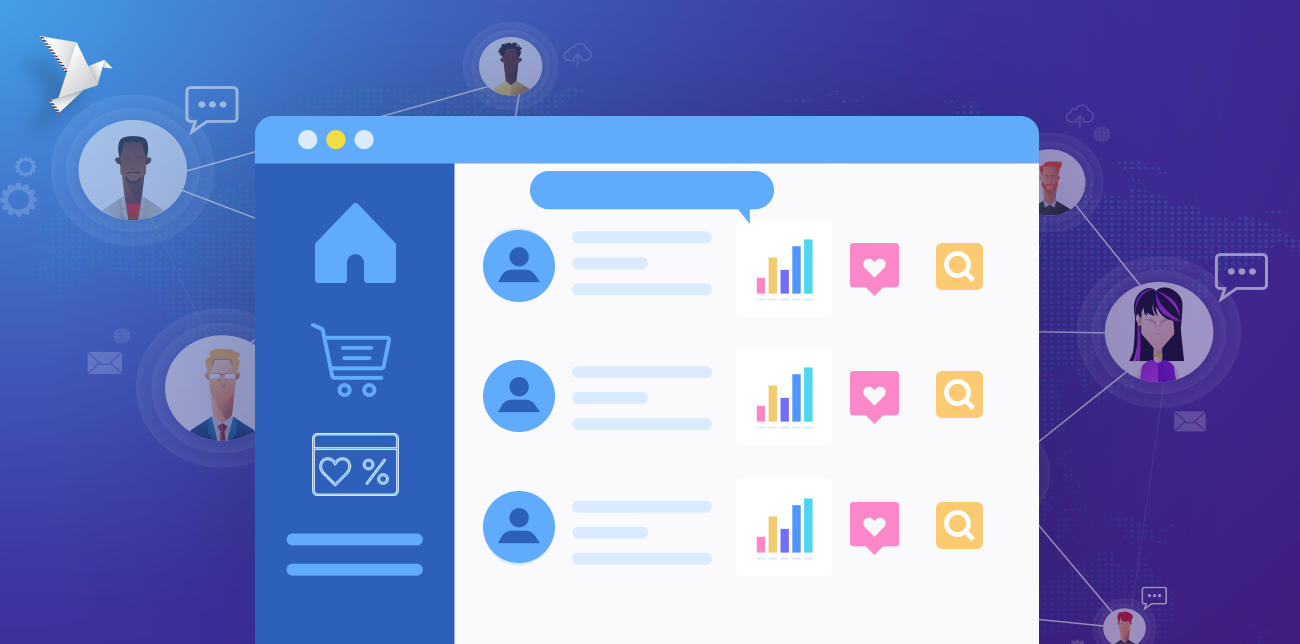Email marketing is a reliable and effective marketing tool that eCommerce companies rely on to grow their business, however, without utilizing segmentation to help your company send more relevant and successful marketing campaigns, you are missing out. This email list segmentation best practices 2023 guide aim to help email marketers to create better newsletters to the intended audience segments.
In previous articles, we’ve discussed the benefits of list segmentation sufficiently. We cannot emphasize enough the reasons why segmentation is a vital element of your marketing campaign, as it allows you to split up your potential customers by grouping them together according to their similar interests, demographics, activity, purchase history and more. This way you can be sure to send the right dynamic message to each specific person at the best time; thus increasing the effectiveness of your marketing campaign.
Understandably, eCommerce businesses face the challenge of trying to figure out what is the best way, out of what seems like endless possibilities, to segment email lists. Is it worth the hassle? Most definitely. And don’t fret, you will find that you can easily set up different eCommerce marketing automation scenarios to nurture campaigns and target your marketing based on your segmented lists, rather than a one-size-fits-all business plan.
Still feeling overwhelmed? Don’t worry, we can help you get on board with using the list segmentation best practices of 2021. Let’s take a look at why segmentation is so important, how it affects your sales, and the basic recipe and tools you will need to benefit from segmentation best practices.
Why list segmentation is important?

Great marketing starts with understanding your customer segments.
There is no secret of the many benefits email segmentation can bring to any online business, as it’s one of the easiest ways to ensure your email list is an effective marketing tool by simply segmenting your contacts specifically by who, what and when you need to target. Here is what we’re talking about:
- 86% of consumers say that personalization plays a role in determining whether or not they buy from a brand.
- List segmentation helps you build reliable customer personas and a true understanding of your audience resulting in an 8% click-through rate compared to general email blasts at a 3% click-through rate.
- Creating detailed customer personas also delivers 5x-8x the ROI in marketing expenditures.
- Studies show as a result of list segmentation email engagement and performance results with open rates increase 14+%, clicks by 100+%, and email campaign revenue of 760%.
- Segmentation lists let you develop trigger email campaigns that can ultimately generate 4x more revenue and 18x greater profits.
- You can also improve your sender reputation by sending more relevant emails. This means lower unsubscribe rates, better deliverability, and fewer spam complaints.
Knowing the importance of implementing list segmentation is one thing. But how do you start to create your own unique segmentation strategy for your eCommerce business? Keep reading, we’re about to reveal the basic key ingredients you will need to do just that…
The basic ingredients for a fine-tuned eCommerce segmentation strategy
Creating a fine-tuned eCommerce segmentation strategy is a process that relies on tried-and-tested experience. So, before you start, let us take out all the guess-work. Here’s what you need:
- A List Building Mechanism – Getting the emails:
You need to be sure to set up a loop with a freebie to ensure you will be constantly getting more and more emails. - The Nurturing Plan – Designing the Email Journey:
This is where you come up with automations that will keep your customers hooked. Use pen and paper at the start. - A Landing Page/Form Creator
You will need this to ensure you capture more information in the most effective manner. It will help further segment your lists.
Tools to do it: One of the most important decisions is what tools are best to assist you in creating your segmentation strategy. There are dozens of tools out there that you can combine, like Sumome or Mailmunch. Or, if you prefer all-in-one solutions, the ContactPigeon suite comes with 5 more tools and limitless automations.
As we mentioned above, the key to monumental repeating conversions is Segmentation. Here are the best practices to do it right.

The 5 email list segmentation best practices of 2021
- Best Practice #1: Few segments > No segments at all. Avoid “Paralysis from Analysis” phenomenon and start off by setting up no more than 3 segments.
- Best Practice #2: Match your customer personas with your segments. Customer personas are one of the two core elements to effective segmentation. Use information from buyer personas documentation and apply it to your groups based on detailed demographic, psychographic, and behavioral values.
- Best Practice #3: Design a different email sequence per segment. Designing emails that are personalized can easily be accomplished with Automation tools. You can target customers with personal dynamic messages catering to their unique personas. After you identify your segments, set up trigger emails at the right time, with the right, relevant information. Read this guide for Lead Nurturing to learn how you can utilize the power of marketing campaign automation to cultivate leads to win conversions in the long run.
- Best Practice #4: Write. Release. Embed. Repeat. A blog ultimately can accelerate your growth if you have a customer segmentation process in place. This way, you can select what blog updates to send to specific subscribers based on their expressed interest in that topic. Therefore, you are more likely to reduce your number of unsubscribes and you will boost your CTR!
- Best Practice #5: Ask for 1 more field every next level. Don’t overdo it with data or your unsubscribe rate will go up, fast. Ask for more data only if you already have found a way how to monetize it. If your business is an eCommerce, be sure to then find the perfect balance between freebies (like guides, industry news, contests) and personalized sales.
- Best Practice #6: eCommerce-only: Make your cross-selling personal. There are sophisticated marketing automation tools that integrate with your eCommerce shop, and based on the data they collect from users behavior, they send personalized product recommendations achieving better CTRs and Conversions — up to x3 times higher than regular emails.
Alternative ways to segment your email lists
Apart from the Buyers Persona method we preferred above to segment our list, there are also other types to easily segment your list:
Age: Recommended only if your product refers to many different age groups
Geography: Ideal for international brands
Gender: Ideal for fashion e-shops
Vertical – Industry: Recommended for Medium or Big Corporations which have a big variety of clients. Ideal for (B2B only) Type of Business
Common top 5 eCommerce customer segments to set up
Let’s go over what types of segment profiles exist, understanding their value, and the best ways to approach them.

Identifying segment profiles helps you reach your target customers with the right message at the best time
1. Never Purchased: Subscribers or contacts who have not yet purchased your product or services. This segment contains new or potential customers who may still be in the discovery phase of their consumer journey. They are taking the time to research the product, learning about your brand or even comparing you with your competitors.
The key to this segment is to demonstrate your value proposition. Use content marketing such as nurturing series, remarketing campaigns to showcase why your product / service / brands are worthy for their consumption.
2. Frequent Buyers: Subscribers who purchase from your brand frequently. This segment is made up of loyal repeat customers already familiar with your brand.
You can track their behaviors easily. So, you can combine web behavior with purchase pattern to build a strong profile on customer interests. This leads to segmented personas, which means you can tailor your messages to your specific contact groups. You can even offer personalized product recommendations!
3. High-Value Spenders: High-spenders either shop very often or they make large orders. This segment needs to be looked after better than the rest, as you are looking to retain them for as long as possible.
The key to demonstrate to this customer is that you value them. For this group, you can offer premium products and special editions, early access to new stuff, or free shipping and gift wrap.
4. Price Sensitive (Deal seekers): These customers either buy with coupons or deals, never paying full price.
This segment can be made up of loyal customers if you are able to identify them and retain them. You can send coupons or watch product cycles, offering deals shortly before their time to buy again.
5. 6-month inactive: Duration may change based on typical consumer purchase cycle, but overall, these customers go dormant for some time. They could have changed their mind about purchasing or simply forgot that they were looking at your product and abandoned cart.
The key to this segment is to try to get them to return to your brand and complete their purchase. Segment cart abandoners by their interests/categories previously searched and send them a personalized message and deals.
Getting things done
Now that you have learned about all of the benefits of email list segmentation best practices, and you have the recipe and tools that you need to create a successful fine-tuned eCommerce segmentation strategy, it is time to get things done! Start out by spending 2 days designing your strategy, 1 day defining the tools you need…and move on with implementation from there. If you are ready to develop a segmentation best practice that defines your leads and brings your customers closer to your brand contact ContactPigeon, our marketing automation platform can help you achieve your business goals.
[full_width][cta id=’2774′][/full_width]




![Benchmarking Growth Strategies of Top Fashion Retailers [Study]](https://blog.contactpigeon.com/wp-content/uploads/2025/11/top-fashion-retailers.jpg)